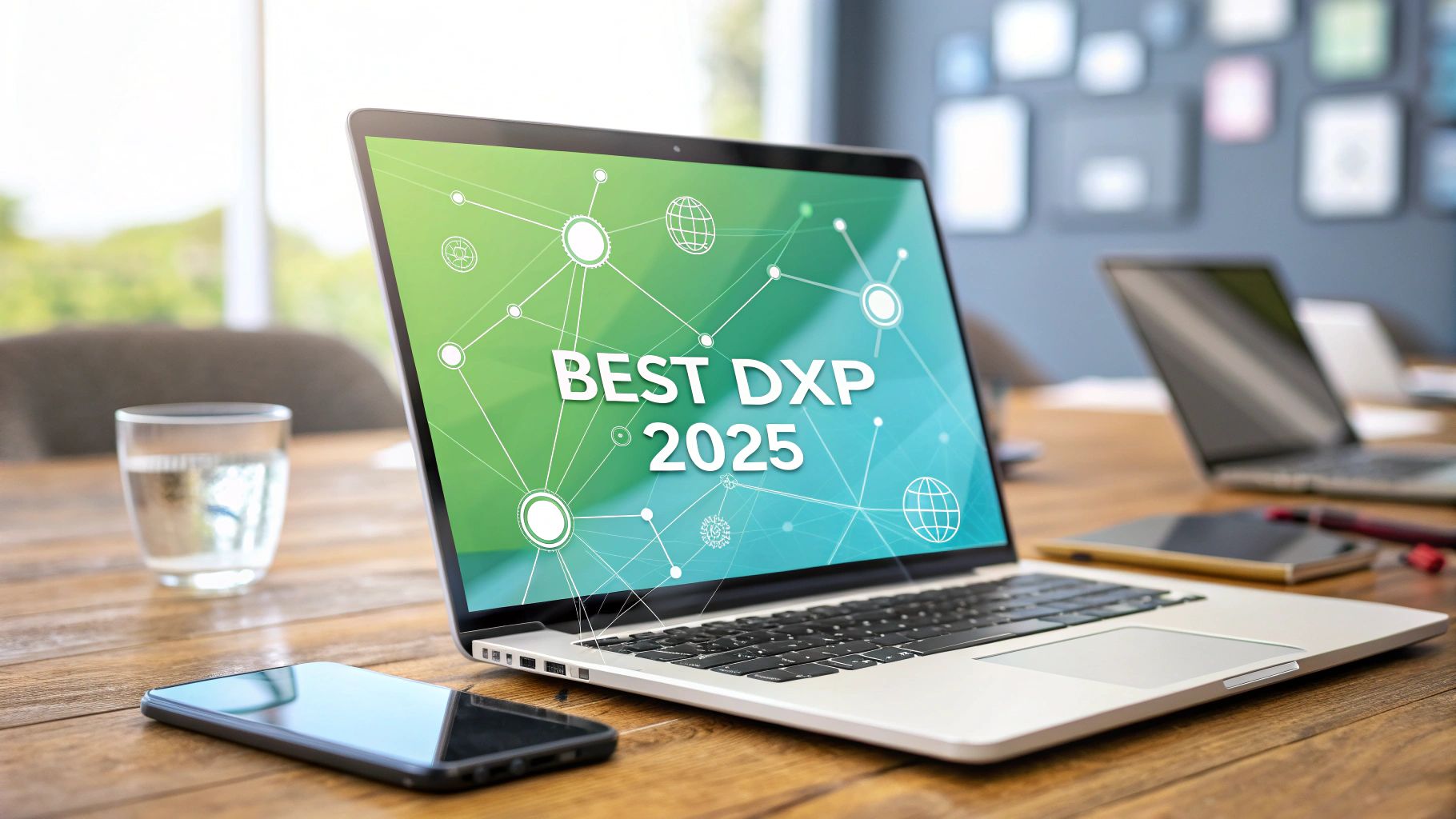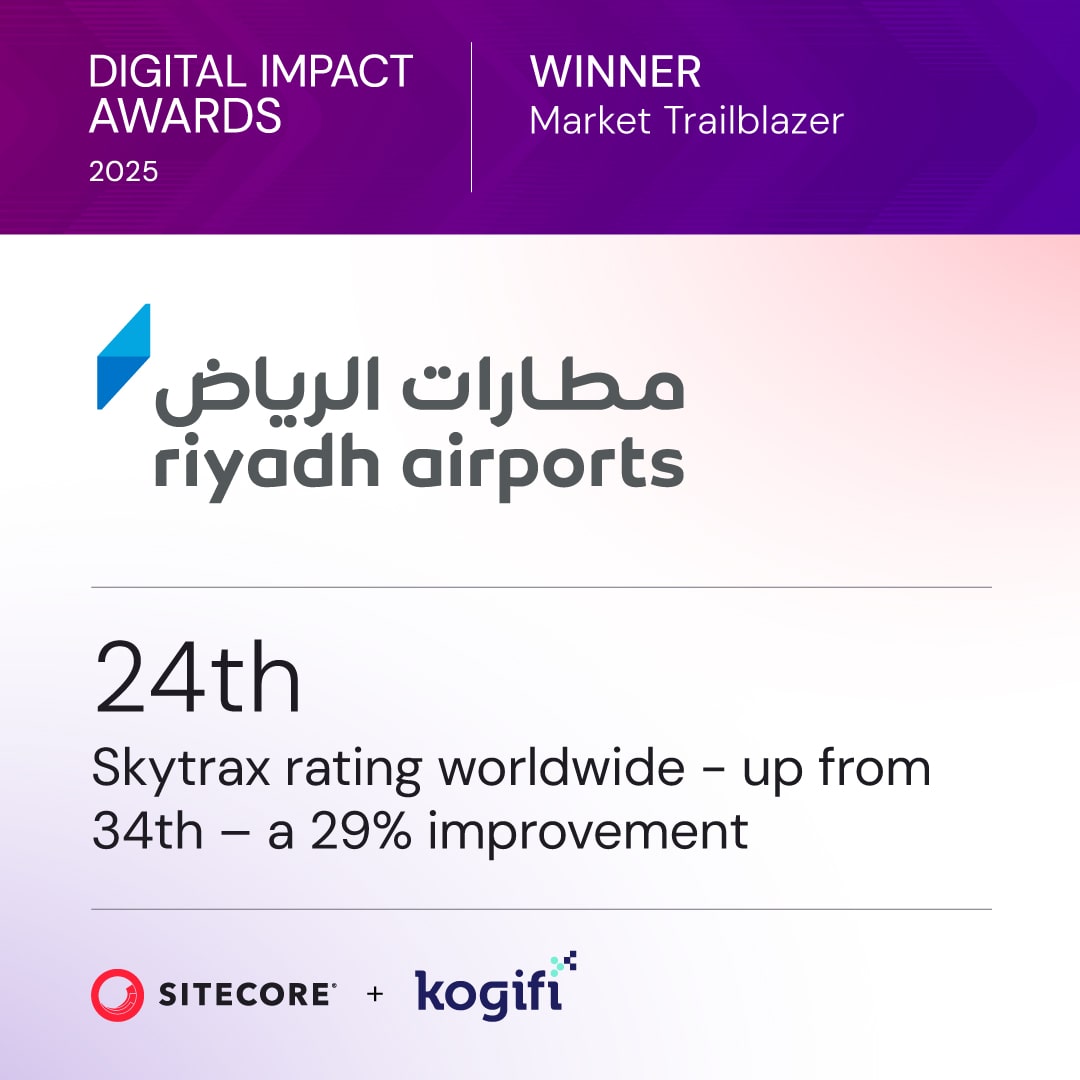Choosing the right Digital Experience Platform (DXP) is a critical decision that shapes your entire digital strategy. An effective DXP is far more than a simple content management system; it's the central hub for creating, managing, and optimizing personalized customer journeys across every touchpoint. However, the market is crowded with options, each promising transformative results. This guide cuts through the noise, providing a detailed analysis of the best digital experience platforms available today.
We will move beyond surface-level feature lists to offer a strategic breakdown of each solution. Our analysis leverages deep expertise, with a particular focus on the robust capabilities of the Sitecore ecosystem and versatile SharePoint integrations, helping you identify the platform that aligns perfectly with your enterprise architecture and business goals. For teams evaluating the technical underpinnings of these platforms, especially their headless and composable capabilities, understanding integration architecture is key. Adhering to RESTful API best practices is fundamental for ensuring seamless data flow between the DXP and other critical business systems.
This resource is designed to be your definitive guide. We explore practical implementation considerations, scalability, and integration strengths to help you make an informed investment that truly drives value. Each entry includes detailed pros and cons, ideal use cases, screenshots, and direct links to help you evaluate your options efficiently.
1. Sitecore XM Cloud / Sitecore DXP
Sitecore XM Cloud stands at the forefront of the DXP market, representing the company's strategic evolution towards a fully composable, cloud-native SaaS architecture. It combines a best-in-class headless content management system with advanced personalization, A/B testing, and analytics capabilities. Designed for enterprises managing sophisticated digital ecosystems, XM Cloud empowers marketing teams with intuitive tools like Pages for visual page building and Components for reusable content blocks, significantly reducing developer dependency for day-to-day content operations.
This makes it one of the best digital experience platforms for organizations seeking both enterprise-grade power and modern agility. For example, a global CPG company can use XM Cloud's multisite management to govern dozens of brand websites while using its embedded personalization to tailor content based on real-time user behavior. The platform's complete product portfolio, including Sitecore Search for AI-powered discovery, Content Hub for DAM and content operations, and Sitecore Connect for low-code/no-code integrations, provides a comprehensive, interconnected ecosystem. For those comparing enterprise options, it's worth exploring a detailed Sitecore vs AEM analysis to understand the architectural and philosophical differences.
Key Considerations
- Best For: Global enterprises and multi-brand organizations that need robust marketer tooling, scalability, and the flexibility of a composable, cloud-native architecture.
- Pros: Powerful, marketer-friendly tools like visual page builders and embedded personalization. Scales effectively for complex multi-brand and multilingual scenarios with a large, mature partner ecosystem. The composable suite allows for phased adoption of capabilities.
- Cons: Pricing can be complex, dependent on traffic, modules, and services. Organizations migrating from legacy on-premise Sitecore XP versions will need a well-defined strategy to adopt the new composable architecture.
- Pricing: Custom pricing. Requires consultation with the sales team or a solution partner.
- Website: https://www.sitecore.com/products/xm-cloud
2. Adobe Experience Manager Sites
Adobe Experience Manager (AEM) Sites is an enterprise-grade Digital Experience Platform (DXP) designed for large organizations managing complex digital properties. Its core strength lies in its powerful web content management system (CMS), which enables teams to deliver consistent, personalized experiences across multiple sites, languages, and channels. The platform is built for enterprises already invested or planning to standardize on the Adobe Experience Cloud ecosystem.
This makes it one of the best digital experience platforms for companies that need seamless data flow between their analytics, personalization, and content tools. For instance, a global brand can use AEM's multi-site management to govern hundreds of regional websites, while leveraging native integrations with Adobe Analytics and Target to deliver AI-powered personalization at scale. This tight coupling is AEM's key differentiator, providing a unified solution that many competitors achieve only through third-party connectors.
Key Considerations
- Best For: Large enterprises, particularly those in regulated industries like finance or healthcare, that require robust governance and are committed to the Adobe technology stack.
- Pros: Deep native integration with Adobe's powerful analytics, testing, and commerce tools. Its mature multi-site and multilingual governance is ideal for complex global operations.
- Cons: The platform's total cost of ownership is high, and its full value is primarily realized when used alongside other Adobe products.
- Pricing: Custom enterprise pricing. Requires a direct sales consultation.
- Website: https://business.adobe.com/products/experience-manager/sites.html
3. Optimizely (Optimizely One / DXP)
Optimizely offers a unified Digital Experience Platform, Optimizely One, that combines a powerful content management system with market-leading experimentation and commerce capabilities. Its core strength is its heritage in A/B testing and optimization, allowing organizations to make data-driven decisions to improve customer journeys. The platform is built for mid-market to enterprise companies that prioritize a culture of experimentation.
This makes it one of the best digital experience platforms for businesses aiming to embed continuous optimization into their digital strategy. A retail company, for example, can use Optimizely's Web Experimentation to test different homepage layouts while using its Content Marketing Platform to orchestrate the campaign's content workflow. This integrated approach to content, commerce, and optimization is Optimizely's key differentiator, providing an all-in-one solution for analytically minded marketing teams. Adopting a DXP of this scale requires careful planning, and understanding the necessary support strategies for a successful DXP implementation is crucial for maximizing its value.
Key Considerations
- Best For: Marketing and e-commerce teams at mid-to-large enterprises that want to build their digital strategy around data-driven experimentation and personalization.
- Pros: Best-in-class experimentation and optimization tools are deeply integrated. The platform offers a broad suite covering content, commerce, and personalization.
- Cons: Pricing can be a significant investment for smaller organizations. Realizing its full potential often requires skilled implementation partners.
- Pricing: Custom pricing based on product selection and usage. Requires a direct sales consultation.
- Website: https://www.optimizely.com/
4. Acquia Digital Experience Platform
Acquia Digital Experience Platform (DXP) is a composable, open-source DXP built around the robust Drupal content management system. It offers a comprehensive suite of tools, including content management, a digital asset manager (DAM), a customer data platform (CDP), and marketing campaign tools. The platform is designed for organizations that prioritize flexibility and want to avoid vendor lock-in.
This makes it one of the best digital experience platforms for enterprises seeking transparency and control. For example, a university can use Acquia's Site Factory to efficiently manage hundreds of departmental websites, while the public sector can rely on its strong compliance and security for citizen-facing portals. The open architecture, supported by over 300 integrations, allows organizations to build a best-of-breed technology stack without being confined to a single ecosystem, which is a key consideration when you evaluate DXP vendors for enterprise needs.
Key Considerations
- Best For: Public sector organizations, higher education institutions, and mid-to-large enterprises that value open-source technology and require a scalable, secure, and compliant cloud foundation.
- Pros: Its open and composable architecture prevents vendor lock-in and offers greater flexibility. The platform has published cloud platform tiers and strong SLAs, providing transparent planning.
- Cons: Realizing the platform's full potential requires comfort and expertise with Drupal. Complex implementations may necessitate engaging specialized partner services.
- Pricing: Based on specific cloud platform tiers; requires a sales consultation for a detailed quote.
- Website: https://www.acquia.com/dxp
5. Liferay Digital Experience Platform
Liferay Digital Experience Platform is an enterprise DXP renowned for its strength in building complex, authenticated user portals. It excels at creating secure customer self-service sites, partner and supplier portals, and comprehensive intranets, making it a top choice for organizations managing intricate user ecosystems. Its architecture is designed for flexibility, offering self-managed, cloud, or SaaS deployment options to fit diverse IT strategies.
This makes it one of the best digital experience platforms for B2B companies and regulated industries that prioritize robust role-based permissions and secure data access. For example, a financial services firm can use Liferay to build a single portal where customers, independent agents, and internal employees can log in and see a completely customized interface with tools and data relevant only to them. Its modular, open-source foundation and strong developer tooling provide a level of extensibility that distinguishes it from more rigid, all-in-one suites.
Key Considerations
- Best For: B2B organizations, government agencies, and companies in regulated industries needing powerful portals for customers, partners, or employees.
- Pros: Excellent for complex authenticated experiences with granular permissions. Its modular and extensible nature is supported by solid developer tooling and industry-specific accelerators.
- Cons: Pricing requires direct sales scoping, and it has fewer out-of-the-box marketing automation tools compared to some marketing-focused DXPs.
- Pricing: Custom pricing based on deployment and scope. A consultation is required.
- Website: https://www.liferay.com/products/dxp
6. Bloomreach
Bloomreach is a commerce-focused Digital Experience Platform (DXP) that excels at unifying content, search, and marketing automation for online retailers. Its strength lies in using a massive commerce dataset to power its AI, offering sophisticated search, merchandising, and personalization capabilities specifically tailored for e-commerce. The platform is designed for businesses that need to connect customer data with product data to drive revenue.
This makes it one of the best digital experience platforms for retail and e-commerce companies looking for a modular, API-first solution. Unlike monolithic suites, a brand can start with Bloomreach's AI-driven site search and expand into its marketing automation or CMS later. For example, an online apparel retailer can use Bloomreach to power dynamic product grids based on user behavior and then launch targeted email campaigns using the same unified data, all through its headless architecture.
Key Considerations
- Best For: E-commerce and retail businesses, particularly in the U.S. market, that need powerful, data-driven search and personalization to increase conversions and average order value.
- Pros: Deep commerce expertise fueled by extensive product and customer datasets. Its modular approach allows businesses to adopt capabilities as needed, and usage-based pricing scales effectively.
- Cons: It's less of an all-in-one, pre-integrated suite compared to competitors, which may require more integration work. Pricing is not publicly available.
- Pricing: Custom quote-based pricing. Requires a direct sales consultation.
- Website: https://www.bloomreach.com/
7. Salesforce Experience Cloud
Salesforce Experience Cloud is a specialized platform for building digital portals, customer communities, and partner enablement sites that are deeply integrated with the Salesforce CRM. Its primary strength is creating authenticated, data-rich digital experiences for known users like customers, partners, or employees. The platform is purpose-built for organizations that want to leverage their existing Salesforce data and workflows to power these external-facing properties.
This makes it one of the best digital experience platforms for companies whose digital strategy revolves around their CRM. For example, a B2B company can launch a partner portal where distributors can access sales data, register deals, and collaborate directly within the Salesforce ecosystem. The platform's unique value comes from its native ability to surface and interact with CRM objects, a capability competitors often require complex custom integrations to achieve. Learn more about the role of AI in DXPs and how it enhances such integrated systems.
Key Considerations
- Best For: Companies of all sizes already invested in the Salesforce ecosystem who need to build secure, data-driven portals or communities for customers and partners.
- Pros: Unmatched, native integration with Salesforce CRM data and workflows. It offers transparent, published pricing models and a vast partner and app marketplace (AppExchange) for extensions.
- Cons: It is not a traditional, full-featured DXP for anonymous marketing sites. It often requires add-ons for advanced CMS or DAM capabilities, and costs can escalate with member/login growth.
- Pricing: Offers various editions with member-based or login-based pricing, starting from $0/month for up to 100 members in the Starter tier.
- Website: https://www.salesforce.com/products/experience-cloud/
8. Contentful
Contentful is a leading composable content platform that serves as the backbone for modern, API-first digital experiences. Rather than being an all-in-one suite, it provides a powerful headless CMS that allows organizations to create structured content and deliver it via APIs to any channel or device. This approach is built for teams that prioritize flexibility, scalability, and a best-of-breed technology stack.
This makes it one of the best digital experience platforms for businesses embracing a composable architecture, where content management is decoupled from the presentation layer. For example, a retail brand can use Contentful to manage product descriptions, marketing campaigns, and blog posts in one central hub, then seamlessly deliver that content to their website, mobile app, in-store digital signage, and even voice-activated assistants. Its strong developer ecosystem and extensive marketplace of apps allow teams to integrate it with other specialized tools for personalization, analytics, and e-commerce.
Key Considerations
- Best For: Technology-forward organizations, from startups to enterprises, that require a flexible, API-first content hub to power a multi-channel digital strategy.
- Pros: Its headless architecture provides maximum front-end freedom. Transparent pricing with free and self-serve plans allows for easy adoption and scaling.
- Cons: It is not an out-of-the-box DXP and requires integration with other martech tools to achieve full DXP functionality. Advanced features are gated in higher-tier plans.
- Pricing: Offers a free Community tier. Paid plans are available with transparent self-serve pricing, with custom pricing for enterprise needs.
- Website: https://www.contentful.com/
9. Magnolia DXP
Magnolia is a composable Digital Experience Platform built around a hybrid headless CMS, offering a flexible and integration-friendly architecture. Its Java-based foundation appeals to enterprises seeking a modular approach that can adapt to existing technology stacks without forcing a complete ecosystem overhaul. The platform allows content teams to work visually while developers maintain control over the frontend experience, supporting both traditional and modern Jamstack development.
This makes it one of the best digital experience platforms for organizations prioritizing architectural flexibility and phased DXP adoption. A company can start with Magnolia’s powerful CMS and gradually connect its preferred commerce, analytics, or marketing automation tools using pre-built connectors or open APIs. This contrasts with monolithic suites that often require a large upfront investment. Its availability on the AWS Marketplace with indicative pricing also provides a level of cost transparency that is rare in the enterprise DXP space.
Key Considerations
- Best For: Mid-market to large enterprises, especially those with strong Java development teams, that need a flexible, API-first DXP to integrate with a diverse set of best-of-breed tools.
- Pros: Highly flexible and composable architecture supports deep integration. Multiple procurement options, including AWS Marketplace, offer transparency and deployment choice.
- Cons: The independent software vendor ecosystem is smaller compared to giants like Adobe or Salesforce. Full pricing requires a custom quote, though marketplace listings give an estimate.
- Pricing: Custom enterprise pricing. Indicative pricing is available on the AWS Marketplace.
- Website: https://www.magnolia-cms.com/
10. HCL Digital Experience
HCL Digital Experience is an enterprise DXP tailored for creating secure, authenticated user experiences like customer portals, intranets, and extranets. Its core focus is on integrating content, applications, and processes into a unified digital hub, making it a strong choice for organizations prioritizing portal functionality and mission-critical, logged-in journeys. The platform is designed for flexible deployment, running on-premises, in the public cloud, or as a managed service.
This makes it one of the best digital experience platforms for businesses that need to deliver complex, personalized information securely to known users. For example, a financial services company can build a customer portal that integrates account data, transaction tools, and personalized content, all governed by robust security controls. Its support for hybrid headless content and composable frontends allows developers to use modern frameworks while leveraging its powerful back-end integration capabilities.
Key Considerations
- Best For: Enterprises in regulated industries like finance, government, and healthcare that require secure, high-performance portals and authenticated user experiences.
- Pros: Flexible deployment options (Kubernetes-ready) with strong security controls. Its consumption-based pricing model aligns costs directly with user traffic.
- Cons: The marketing technology ecosystem is smaller compared to more marketing-focused suites. Cost optimization requires careful sizing of the user session tiers.
- Pricing: Session-based licensing tiers. Available via AWS Marketplace with USD pricing.
- Website: https://www.hcl-software.com/dx
11. OpenText Web CMS (TeamSite)
OpenText Web CMS, widely known as TeamSite, is an enterprise-focused Digital Experience Platform designed for large, global organizations, particularly those in regulated industries. Its strength lies in providing a highly governed, secure, and scalable environment for managing complex digital properties. As part of the broader OpenText Digital Experiences portfolio, it offers a composable architecture that allows businesses to build out their tech stack with powerful integrations.
This makes it one of the best digital experience platforms for companies that prioritize robust governance and need to connect content management with other enterprise systems like DAM and customer data products. A key differentiator is its hybrid headless authoring model, which empowers marketing teams with intuitive tools while giving developers the flexibility to build modern front-end experiences. This dual approach ensures both business agility and technical innovation can coexist within a secure, compliant framework.
Key Considerations
- Best For: Large enterprises in regulated sectors like finance, government, and life sciences requiring strong governance, security, and scalability for their web properties.
- Pros: Part of a broad, enterprise-grade ecosystem that includes digital asset and customer data management. Its hybrid approach accommodates both marketers and developers, and its governance features are ideal for large-scale deployments.
- Cons: Pricing is not publicly available and is geared toward enterprise budgets. Unlocking the full platform capabilities may require licensing additional modules or services.
- Pricing: Custom enterprise pricing. Requires direct consultation with the OpenText sales team.
- Website: https://www.opentext.com/products/content-management-system
12. G2 Digital Experience Platforms (DXP) Category
While not a DXP itself, the G2 DXP Category is an indispensable research tool for any organization evaluating these complex platforms. It serves as a comprehensive software marketplace, aggregating user reviews, feature breakdowns, and vendor comparisons in one place. This resource allows teams to filter and sort platforms based on company size, user satisfaction scores, and specific features, providing a vital, unbiased starting point for the selection process.
This makes it one of the best digital experience platforms to consult when building a vendor shortlist. For example, a mid-market e-commerce business can use G2's Grid reports to identify "High Performers" that are well-suited for their scale, then dive into peer reviews to understand real-world implementation challenges or standout features. This vendor-agnostic perspective is crucial for validating marketing claims and uncovering potential alternatives that might not have been on your initial radar.
Key Considerations
- Best For: Any business in the discovery or evaluation phase of selecting a DXP, from startups to large enterprises.
- Pros: Broad coverage of vendors and current user sentiment. Excellent for discovering new platforms and creating a data-backed vendor shortlist. Vendor-agnostic viewpoint helps verify marketing claims.
- Cons: Review quality and recency can be inconsistent. Rankings can be influenced by the volume of reviews rather than just quality, so findings should be verified with demos and trials.
- Pricing: Free to access and use for research.
- Website: https://www.g2.com/categories/digital-experience-platforms-dxp
Top 12 Digital Experience Platforms Comparison
Making Your Final Decision: Partnering for Success
Navigating the landscape of the best digital experience platforms can feel overwhelming. We've explored a wide array of solutions, from the enterprise-grade powerhouses like Sitecore XM Cloud and Adobe Experience Manager to more specialized platforms such as Contentful and Bloomreach. Each offers a unique combination of content management, personalization, analytics, and e-commerce capabilities designed to help you create seamless, context-aware customer journeys.
The core takeaway is that the "best" DXP is not a one-size-fits-all designation. It is the platform that most closely aligns with your organization's specific digital maturity, technical resources, and long-term business objectives. Your decision hinges on a clear understanding of your own needs, particularly when choosing between robust ecosystems like Sitecore and integrated knowledge management solutions like SharePoint.
Key Considerations Before You Commit
Before making a final selection, it's crucial to look beyond feature lists and marketing promises. True success with a DXP is less about the initial purchase and more about the strategic implementation and ongoing optimization.
- Implementation Complexity: Platforms like Sitecore and SharePoint are immensely powerful but demand deep technical expertise for proper setup, integration, and customization. Underestimating this phase is a common pitfall that can lead to budget overruns and an underutilized platform.
- Total Cost of Ownership (TCO): Licensing is just one part of the equation. Factor in costs for implementation, necessary integrations with your existing tech stack (CRM, ERP), ongoing maintenance, developer training, and potential agency or partner support fees.
- Ecosystem and Partner Network: The strength of a DXP often lies in its partner ecosystem. A robust network, like the one supporting Sitecore, means access to certified experts who can accelerate your implementation, build custom solutions, and provide specialized support that the vendor itself may not offer.
- Scalability and Future-Proofing: Your choice must support not only your current needs but also your future growth. Consider the platform's architecture. Does a composable, headless approach like that offered by Sitecore XM Cloud provide the flexibility you'll need in three to five years?
The Critical Role of a Strategic Partner
Selecting from the best digital experience platforms is only the first step. The true success of your digital transformation hinges on a strategic partnership that can translate technology into tangible business outcomes. A powerful DXP in inexperienced hands is like a race car without a driver, it has immense potential but is ultimately useless.
An expert partner does more than just install software. They begin by conducting a thorough digital maturity audit to benchmark your current capabilities. From there, they help architect a solution—whether it's a full Sitecore implementation or a SharePoint-based intranet—create a phased roadmap to deliver value quickly, and provide the critical 24/7 support needed to ensure your platform delivers sustained ROI. This strategic guidance is what turns a significant technology investment into a competitive advantage.
Ready to move from evaluation to execution? The journey to digital excellence requires a guide who understands both the technology and your business goals. Kogifi specializes in implementing and optimizing enterprise-level DXP solutions, with deep expertise in the Sitecore and SharePoint ecosystems. Connect with our DXP strategy team today to discuss how we can align the right platform with your unique enterprise needs and build a roadmap for measurable success.








































